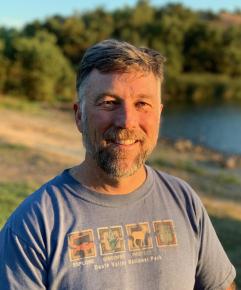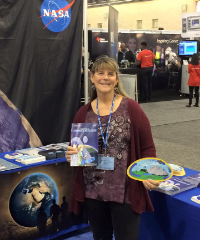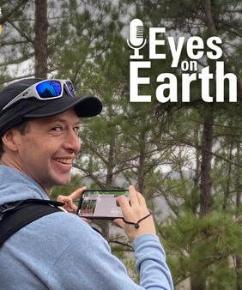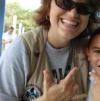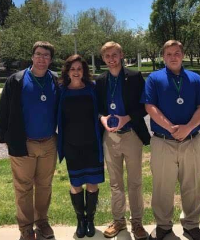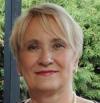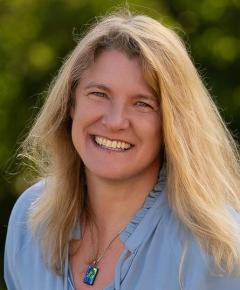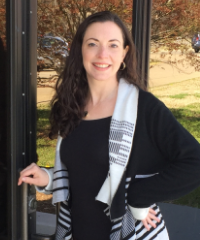Community Blogs
Community Blogs
Discover how the GLOBE community is engaging in all things GLOBE through the community blog posts below.
Learn how to create a GLOBE community blog post.
Filter By:
Blogs List
Greetings ENSO Participants,
Last night, we had an amazing ENSO Short Observation & Data Analysis (SODA) webinar featuring Shumate Middle School teacher, Mr. Jeff Bouwman . Jeff shared how his students have been taking GLOBE ENSO protocol measurements and exploring the campaign's three "Guiding Investigative Questions."
Please visit the ENSO Phase III Webinar Page to view this archived webinar and to learn more about the SODA events and upcoming webinars. You will also see archived and future ENSO Phase III Monthly Science and Research webinar information.
Brian ...
Read More »
Posted in:
Field Campaigns:
EL NIÑO
Investigation Areas:
ATMOSPHERE
HYDROSPHERE
EARTH AS A SYSTEM
BIOSPHERE
PEDOSPHERE (SOIL)
Please join us for the GLOBE ENSO Phase III SODA Webinar #1: November 6, 2017 at 8:00pm ET (November 7, 2017 at 1:00am UTC) Getting Science Done with Shumate Middle School featuring Teacher, Jeff Bouwman.
SODA Event Data Collection Time Period: October 2017.
Jeff Bouwman, a science teacher at the Shumate Middle School in Gibraltar, Michigan USA is no stranger to getting his students involved in collecting hands-on data. Jeff also has students monitoring automatic environmental data coming into Shumate's WeatherSTEM weather station. Come and hear all about how Jeff's students are ...
Posted in:
Field Campaigns:
EL NIÑO
We've been busy for the last few months updating the GLOBE website with a new look and feel and new features. The goal is to both refresh the site as well as to really highlight all the work everyone is doing. You'll find new capabilities on the home page including an animation of the last 7 days worth of data, and a "leaderboard" for each protocol. If you're looking for someone to collaborate, look at the leaderboard to find the most active teachers in any region or country.
Your My Pages will be changing too - featuring your training accomplishments, with more ...
Posted in:
What are the impacts of extreme events, like Hurricane Harvey, on the water quality? This article from the Smithsonian magazine describes multiple ways in which public health officials are responding to several threats facing residents of Houston and surrounding locations. These threats include the impact of mold, the potential of an increase in vector-borne diseases such as Zika and West Nile virus, and the problems of contaminants left behind in the public water supply.
Have you experienced severe flooding in your region that resulted in problems with water quality? ...
Posted in:
Curriculum:
STEM
SCIENCE AND MATH
Event Topics:
CAMPAIGNS AND PROJECTS (IOPS, ETC)
SCIENCE SYMPOSIA AND FAIRS
Field Campaigns:
EL NIÑO
WATERSHEDS
GLOBE Science Topics:
EARTH AS A SYSTEM
CLIMATE CHANGE
BACKYARD SCIENCE
CLIMATE
Investigation Areas:
ATMOSPHERE
EARTH AS A SYSTEM
HYDROSPHERE
PEDOSPHERE (SOIL)
BIOSPHERE
News Topics:
SCRC RESEARCH
https://earthengine.google.com/timelapse/#v=52.02687,-9.54373,10.654,latLng&t=3.20
Posted in:
One way to teach students about water quality and/or how scientists go about their work is to share articles with them. Here is a great article entitled " Study Maps Hidden Water Pollution in U.S. Coastal Areas ". This research shows a great example of the use of both NASA satellite data and ground-based data. In this study, the researchers used U.S. topographic data as well as NASA climate models to "identify key inland regions that contribute groundwater and contaminants to the coast. They examined rainfall, evaporation rates and the amount of known surface runoff to ...
Posted in:
Curriculum:
STEM
SCIENCE AND MATH
Event Topics:
CAMPAIGNS AND PROJECTS (IOPS, ETC)
SCIENCE SYMPOSIA AND FAIRS
Field Campaigns:
EL NIÑO
GLOBE Science Topics:
EARTH AS A SYSTEM
EARTH SYSTEM SCIENCE
SCIENTIST SKILLS
CLIMATE CHANGE
DATA INCLUDED
CLIMATE
Investigation Areas:
EARTH AS A SYSTEM
HYDROSPHERE
Learning Activities:
EARTH AS A SYSTEM
ATMOSPHERE AND CLIMATE
HYDROLOGY
Climb a volcano, hike in a rainforest, and search for monkeys at the beach — the expedition itinerary features the essential highlights of Costa Rica while integrating The GLOBE Program protocols, receiving GLOBE certification (if needed) within climate change and educational exchange in the tropics. We begin in the lush lowland rainforest of Selva Verde, continue to Arenal Volcano to discover geological history, and witness the unique coastal biodiversity inhabiting Manuel Antonio National Park. Plus, we’ll enjoy opportunities for cultural exchange with the local communities ...
Posted in:
The UCAR Center for Science Education (UCAR SciEd) and BSCS are developing GLOBE Weather , an innovative, NGSS -based middle school science unit that combines activities, data analysis, and scientific protocols from the GLOBE Program . This project is funded by NASA and in coordination with the GLOBE Implementation Office. The final curriculum unit will be available (and free!) in 2019.
In the 5-week GLOBE Weather curriculum, students will engage with weather data to make sense of interesting real-world phenomena through the BSCS 5E instructional approach ...
Posted in:
Curriculum:
STEM
GLOBE Science Topics:
MEETINGS/CONFERENCES
EARTH SYSTEM SCIENCE
Primary Audience:
TEACHERS
Teacher's Guide:
NGSS
MIDDLE: 6-8
Learn more about Phase III of the GLOBE ENSO Student Research Campaign HERE!
Posted in:
Field Campaigns:
EL NIÑO
Written By Allyson Edwards Hawkins High School, Hawkins Texas
When signing up for the GLOBE science club at my school, little did I realize the impact that it would have on my life. Our original team, comprised of just three eighth grade girls would one day develop into an international collaboration among students in three different countries. It wasn’t always easy but it my entire worldview was changed by being apart of GLOBE.
For our story, it began with us meeting face to face at a science conference ...
Posted in:
Curriculum:
STEM
Event Topics:
GLOBE LEARNING EXPEDITIONS
GLOBE Working Groups:
EDUCATION WORKING GROUP
Primary Audience:
TEACHERS
STUDENTS
ALUMNI
Written by Pegi Pavletić, Croatian GLOBE Alumni
Four years ago, as a Croatian GLOBE team of Medical high school in Rijeka, Megi Pavletić, Dina Bolkovac, our professor Tatjana Holjević and I, Pegi Pavletić visited 2nd Student research exhibition in Maryland, USA. That was an exciting opportunity for us as students in medical branch of studies, to experience ecological experimental work and gain further knowledge. That is where we stepped into contact with Hawkins school in Texas and their GLOBE team: Madison Jaco, Hope Hughes, Allyson Edwards and their mentor Audra Kay ...
Posted in:
Curriculum:
STEM
Event Topics:
GLOBE LEARNING EXPEDITIONS
GLOBE Working Groups:
EDUCATION WORKING GROUP
Primary Audience:
TEACHERS
STUDENTS
ALUMNI
Written By Vaibhav Chakraborty New Delhi, India
It’s been almost 5 years since I first met these lovely people from Hawkins, Texas at GLOBE conference in New Delhi. At that point if someone would’ve asked me whether it’s a long run friendship or just a temporary meeting, but soon it turned out to be one of the best thing to have happened to me. While working on water and soil protocol as a part of GLOBE project, our respective schools scheduled Skype sessions so that we could exchange our data and be able to measure the differences between our data and draw a ...
Posted in:
Curriculum:
STEM
Event Topics:
GLOBE LEARNING EXPEDITIONS
COMPETITIONS
GLOBE Working Groups:
TECHNOLOGY WORKING GROUP
SCIENCE WORKING GROUP
EDUCATION WORKING GROUP
EVALUATION WORKING GROUP
Primary Audience:
ALUMNI
Written by Madison Jaco, GLOBE Alumni Hawkins Texas
I have just finished up my first year at the greatest university in the world, Texas A&M (Gig ‘Em!), with the goal of earning my Bachelor of Arts in International Studies with a focus on Politics and Diplomacy and a French minor. Any time I tell people that, they are shocked. “How did you ever get into that coming from such a small town in East Texas?” I usually answer this with a follow up question. “Ever heard of the GLOBE Program?”
Then I go into my spiel. I tell people all ...
Posted in:
Curriculum:
STEM
Event Topics:
GLOBE LEARNING EXPEDITIONS
GLOBE Science Topics:
MEETINGS/CONFERENCES
GLOBE Working Groups:
EDUCATION WORKING GROUP
News Topics:
COMPETITIONS
" There is an increasing chance (~55-60%) of La Niña during the Northern Hemisphere fall and winter 2017-18." says the NOAA Climate Prediction Center.
" Over the last month, equatorial sea surface temperatures (SSTs) were near-to-below average across the central and eastern Pacific Ocean (Figure 1).
ENSO-neutral conditions were apparent in the weekly fluctuation of Niño-3.4 SST index values between -0.1°C and -0.6°C (Figure 2).
Posted in:
Field Campaigns:
EL NIÑO
Croatian GLOBE community has been organizing Science Fairs for the past 18 years, with the goal to encourage and promote students' research projects. Each year the judges select 30 - 40 school projects for the presentation at the GLOBE fair and for publishing on Croatian GLOBE website http://globe.pomsk.hr/smotra2017/zadar_17_projekti.htm . Among the projects at the fair, there are always several joint school projects. Usually, collaborating schools are from the same region, which gives them the opportunity to meet face to face and organize joint fieldwork or working sessions. ...
Posted in:
GLOBE Working Groups:
EDUCATION WORKING GROUP
This week's blog is written by Bonnie Banyas , a teacher at Memorial School in Newton, NH . The New Hampshire Education and Environment Team (NHEET) , funded through a state Math Science Partnership grant , was able to support the purchase and installation of a weather shelter at Memorial School (and the other participating schools) and the associated supplies for collecting environmental data. These materials were used to implement field investigation units in several grade levels, centered around the theme for 2016-2017, " Atmosphere, Weather and Climate ." Bonnie generously ...
Posted in:
I do hope that we "see" many of you in our first webinar of Phase III of the ENSO Student Research Campaign as we transition to a focus on collaborating and learning more about water in our environment. Tomorrow evening, Oct. 3rd at 8 pm (ET), we will hear from NASA scientist, John Bolten about the many ways in which NASA studies Earth's water. You might be surprised to know that the NASA Applied Sciences Program has an entire program which focuses on water resources. The Water Resources group organized its projects under five themes: drought, floods, irrigation/evapotranspiration, ...
Posted in:
Field Campaigns:
EL NIÑO
The journal Scientific American just published a blog about GLOBE. The post, titled " The GLOBE Program: Making the Case for K–12 Citizen Scientists " discusses several aspects of GLOBE, including our contributions and campaigns. As well, it helps explain our mission of providing the resources for students across the world to become citizen scientists.
"Contributing to global datasets not only gives students a chance to collect data that scientists can actually use, but allows them to compare their experiences and findings with other students around the world."
To read more ...
Posted in:
Event Topics:
CAMPAIGNS AND PROJECTS (IOPS, ETC)
OTHER
Field Campaigns:
EL NIÑO
SURFACE TEMPERATURE
GLOBE Science Topics:
SCIENTIST SKILLS
GLOBE PROTOCOLS
BACKYARD SCIENCE
Primary Audience:
TRAINERS
TEACHERS
STUDENTS
PARTNERS
SCIENTISTS
ALUMNI
COUNTRY COORDINATORS
Just How ‘Cool’ Was The Eclipse? Temperature Data From NASA Langley
Anyone who witnessed the total solar eclipse on August 21st, 2017 would agree--it was an awe-inspiring event. The Sun was blotted out by the Moon, a 360° sunset glowed from every direction. Nocturnal animals like crickets began their night-time activities while people went quiet to watch the stars come out in the middle of the day. Even for those not in the path of totality, the extra-sharp shadows cast by the partially eclipsed Sun and the crescent-shaped lights cast through pinhole projectors, interlaced fingers, ...
Posted in:
It is pretty neat when you can get two for the price of one- as most teachers can attest to with regard to trying to get everything into their curriculum. Did you know that this year, the FIRST LEGO League's challenge is focused on water. And what could be better, as that water is also the theme of this year's ENSO Student Research Campaign !
The LEGO Challenge Project states: "People use water every day, but they don’t think much about how and why they use water. Whether it’s directly (drinking or washing) or indirectly (manufacturing the products they use or producing food ...
Posted in:
Curriculum:
STEM
SCIENCE AND MATH
Event Topics:
CAMPAIGNS AND PROJECTS (IOPS, ETC)
SCIENCE SYMPOSIA AND FAIRS
COMPETITIONS
Field Campaigns:
EL NIÑO
WATERSHEDS
GPM
GLOBE Science Topics:
EARTH AS A SYSTEM
EARTH SYSTEM SCIENCE
GLOBE PROTOCOLS
CLIMATE CHANGE
CLIMATE
Investigation Areas:
ATMOSPHERE
Learning Activities:
EARTH AS A SYSTEM
ATMOSPHERE AND CLIMATE
News Topics:
COMPETITIONS
Primary Audience:
TEACHERS
STUDENTS
—
20 Items per Page







